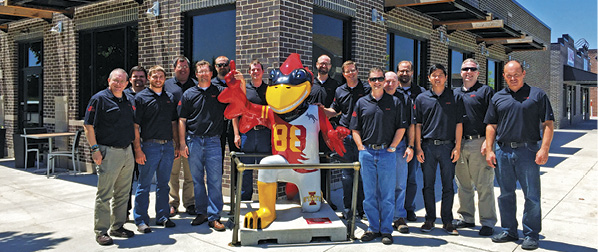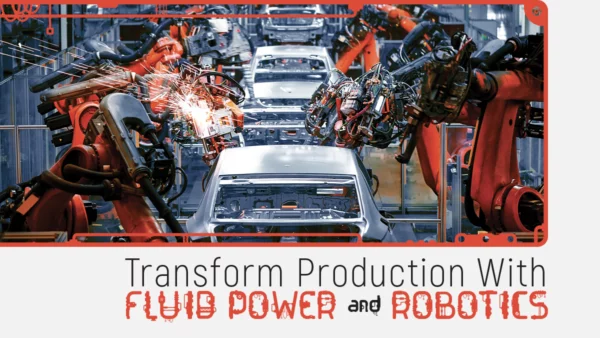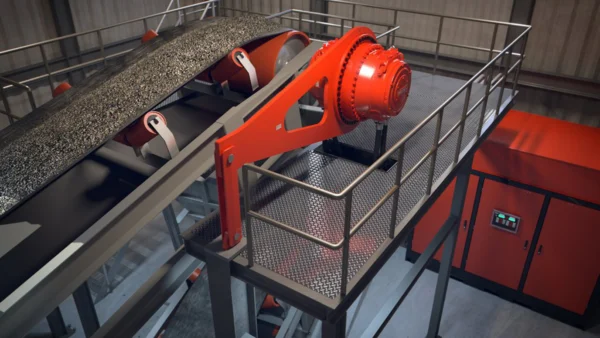From Challenge to Solution

The Impact of Advanced Valve Technology on Medical Technology
By Todd Harmon, Vice President of Canfield Industries Spartan Scientific (Division of Canfield Industries), APVS-08 Valve on Medical Technology
In medical equipment manufacturing, the integrity and performance of component parts are paramount, as these components directly impact operational efficiency and patient safety. The development of advanced fluid control technology has pushed the industry forward, especially for applications that demand precision and reliability, such as endoscope cleaning machines.
This high standard is crucial because any failure in the equipment can lead to severe consequences, including compromised patient care and increased operational costs. The development of advanced fluid control technology has significantly pushed the industry forward, introducing innovations specifically designed for applications that demand the utmost precision and reliability.
This story delves into how innovative design has not only addressed significant industry challenges but also established new benchmarks in valve performance and reliability. Traditional valves often faced issues such as frequent maintenance needs, incompatibility with aggressive cleaning agents, and suboptimal performance under varying operational conditions. The advent of advanced materials and technologies has revolutionized these components. For instance, the use of media-separated, air-piloted control valves with CPVC bodies and diaphragms made from advanced materials like FKM, NBR, EPDM, and PTFE ensures compatibility with aggressive cleaning agents and enhances the valve’s durability and performance.
Moreover, the integration of sophisticated air piloted control mechanisms allows for precise management of fluid flow, which is crucial for the meticulous cleaning processes required in medical applications. These valves are designed to be configurable, with options for normally closed, normally open, or double acting positions, thereby offering flexibility to meet various operational needs. The addition of optional sensors and manual overrides further enhances functionality, enabling real-time monitoring and control adjustments during operation.
The impact of these advancements extends beyond individual components to the overall efficiency and cost-effectiveness of medical equipment. For example, the new valves have demonstrated their reliability through comprehensive testing, showing significant cost savings by reducing maintenance needs and prolonging the lifespan of cleaning machines’ critical components. These improvements have led customers to transition entirely to the new valves, resulting in increased orders and an enhanced market presence for the distributors. As the industry moves forward, such advancements set new benchmarks for what is achievable, ensuring that medical equipment can operate with greater reliability, efficiency, and safety.
The Need for a New Solution
Endoscope cleaning is a process that requires meticulous attention to detail and reliability in the operation of cleaning equipment. One long-standing customer faced significant operational challenges with the performance and cost of their previous valve supplier. The supplier’s valves were integral to the cleaning machines, yet this customer found them failing to meet the necessary standards of quality and efficiency, leading to increased operational downtimes and maintenance costs.
In response to this customer’s needs, a design team initiated the development of a new valve. This product was designed as a drop-in replacement for the previous units, but with a more precise design and increased functionality. The new valve is a media-separated, air-piloted control valve adept at managing the caustic and challenging fluids used in medical cleaning applications. It features CPVC bodies and diaphragms made from advanced materials such as FKM, NBR, EPDM, and PTFE. This ensures compatibility with aggressive cleaning agents while offering the necessary performance.
 How the Valve Works
How the Valve Works
The valve operates using a sophisticated air-piloted control mechanism, allowing for precise management of fluid flow. It is designed as a 2-way, 2-position valve that can be configured to be normally closed, normally open, or double-acting. This flexibility is crucial as it allows the valve to be adapted for various specific applications, ensuring optimal performance in each scenario. This mechanism ensures that the valve responds accurately to varying operational demands, making it ideal for critical applications such as endoscope cleaning machines. The valve uses an inert gas or spring mechanism to control its operation. The addition of optional sensors and manual overrides enhances its functionality, allowing for real-time monitoring and control adjustments during operation.
To control its operation, the valve employs either an inert gas or a spring mechanism. The use of an inert gas helps to prevent contamination and maintain the integrity of the system, which is especially important in medical applications where cleanliness is paramount. The spring mechanism, on the other hand, provides a reliable and consistent force to operate the valve, ensuring smooth and predictable performance.
Furthermore, the valve’s design includes the capability to integrate optional sensors and manual overrides. These additions significantly enhance the valve’s functionality by allowing for real-time monitoring and control adjustments during operation. The sensors can provide critical feedback on the valve’s status, such as position and flow rate, enabling operators to make informed decisions quickly. Manual overrides offer an additional layer of control, ensuring that the valve can be operated manually in case of automated system failure or during maintenance procedures.
Overall, these advanced features contribute to the valve’s reliability and versatility. By enabling precise fluid control, real-time monitoring, and adaptable configurations, this valve addresses the stringent requirements of medical equipment, ensuring both operational efficiency and patient safety. The integration of such advanced technology in valve design sets a new standard in the industry, pushing the boundaries of what is possible in fluid control applications.
Fluid Control forMedical Technology
Fluid control technology plays a crucial role in medical applications where precision and reliability are essential. Endoscope cleaning machines, as well as other devices such as dialysis equipment, and automated medication delivery systems rely heavily on accurate fluid control to ensure patient safety and the effectiveness of treatments. Advanced valves and control mechanisms are necessary to manage various fluids, including aggressive chemicals and sensitive biological materials, without contamination or failure.
Current State of the Industry
The medical technology industry is continually evolving, with increasing demands for higher precision, reliability, and efficiency. Recent advancements in fluid control technology have enabled significant improvements in medical devices, enhancing their performance and reducing the risk of malfunctions. The integration of smart technology and IoT capabilities has further revolutionized the industry, allowing for real-time monitoring and remote adjustments, which are critical for maintaining the stringent standards required in medical environments.
Importance of Valves in Medical Applications
Valves are integral components in fluid control systems within medical applications. They ensure that fluids are directed accurately and safely, preventing leaks and cross-contamination. The reliability of these valves is crucial, as any failure can lead to significant operational issues and potentially jeopardize patient safety. Therefore, the development of robust, reliable, and efficient valves is a top priority for manufacturers aiming to meet the high standards of the medical industry.
Regulatory Considerations in Fluid Control for Medical Technology
Compliance with regulatory requirements is essential for fluid control components used in medical applications. Standards set by organizations such as the FDA and ISO ensure that these components meet stringent safety and performance criteria. Adhering to these regulations not only guarantees product reliability but also ensures patient safety. Manufacturers must navigate a complex landscape of guidelines to ensure their products are certified for use in medical environments.
Future Trends in Fluid Control Technology
The future of fluid control technology in medical applications looks promising, with innovations on the horizon that could further enhance precision and efficiency. Emerging technologies such as AI and ML are being integrated into fluid control systems for predictive maintenance and advanced diagnostics. These technologies enable systems to predict potential failures and optimize performance proactively, reducing downtime and maintenance costs.
Pushing the Industry Forward
Fluid control technology like this new valve demonstrates how a system can be improved by streamlined technology. The new design incorporates feedback mechanisms that allow real-time monitoring of valve status during machine operation. Furthermore, the valve’s design emphasizes low maintenance requirements and energy efficiency. This story shows how any system can be improved by introducing components that perform efficiently for the respective end user.
The Impact of the New Valve
After a comprehensive testing phase, the new valve demonstrated its capability as a reliable replacement for the previous units. This new design provided significant cost savings through reduced maintenance needs and enhanced the lifespan of the cleaning machines’ critical components. Recognizing these substantial improvements, the customer transitioned all their machines to incorporate the new valve. This transition resulted in increased orders for the distributor, boosting both their sales volume and market presence.
Conclusion
The deployment of this valve illustrates the development of practical and reliable solutions within the fluid power industry. The industry benefits from targeted engineering interventions that yield substantial operational improvements and cost efficiencies in critical healthcare applications. Continued advancements in technology show that the challenges of today’s medical equipment requirements can be effectively met. With the rapid pace set by every sector, everyone involved looks forward to who and what will set the benchmark for the future.







